Shawn Levy on the ‘Miracle’ of Casting an Actor Who Is Blind in ‘All the Light We Cannot See’ and How the Duffer Brothers Taught Him Not to Compromise
- Oops!Something went wrong.Please try again later.
- Oops!Something went wrong.Please try again later.
- Oops!Something went wrong.Please try again later.
- Oops!Something went wrong.Please try again later.
- Oops!Something went wrong.Please try again later.
- Oops!Something went wrong.Please try again later.
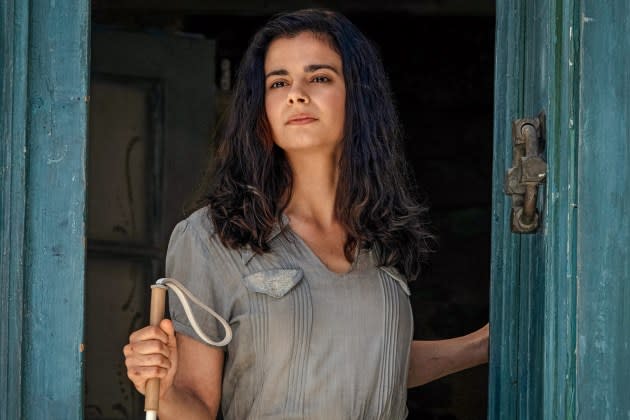
That summer of 2022, the walled coastal French town of Saint-Malo got a taste of Hollywood, with “Stranger Things” director-executive producer Shawn Levy running up and down the windy beach, fiercely determined to shoot crucial scenes of his World War II-set Netflix series “All the Light We Cannot See.”
It wasn’t over-the-top action that Levy was hyped about, but rather an intimate father-daughter moment portrayed by Mark Ruffalo and newcomer Aria Mia Loberti, who plays Marie-Laure, a courageous blind teenager living in Nazi-occupied France.
More from Variety
Loberti, who is a Ph.D. student in rhetoric at Penn State, was discovered through a worldwide casting call for actors who are blind or visually impaired. In “All the Light We Cannot See,” Marie (as she’s called in the series) crosses paths with Werner (Louis Hofmann), a conflicted young German soldier hired for his radio tech skills, who is willing to challenge orders. The textured adaptation, penned by “Peaky Blinders”’ creator Steven Knight, subtly weaves time frames and storylines involving Marie’s loving father (Ruffalo), a Paris museum locksmith; her reclusive great-uncle (Hugh Laurie), who is a war veteran; as well as Werner and her nemesis, Sergeant Major Reinhold von Rumpel (Lars Eidinger).
As he listens to Marie’s secret radio broadcasts every night, Werner develops a connection to her. When he’s tasked by von Rumpel, a Gestapo officer, to track Marie down in Saint-Malo to seize a precious diamond that she’d got from her father, Werner defies orders to protect her. She in turn discovers there’s more to him than his uniform.
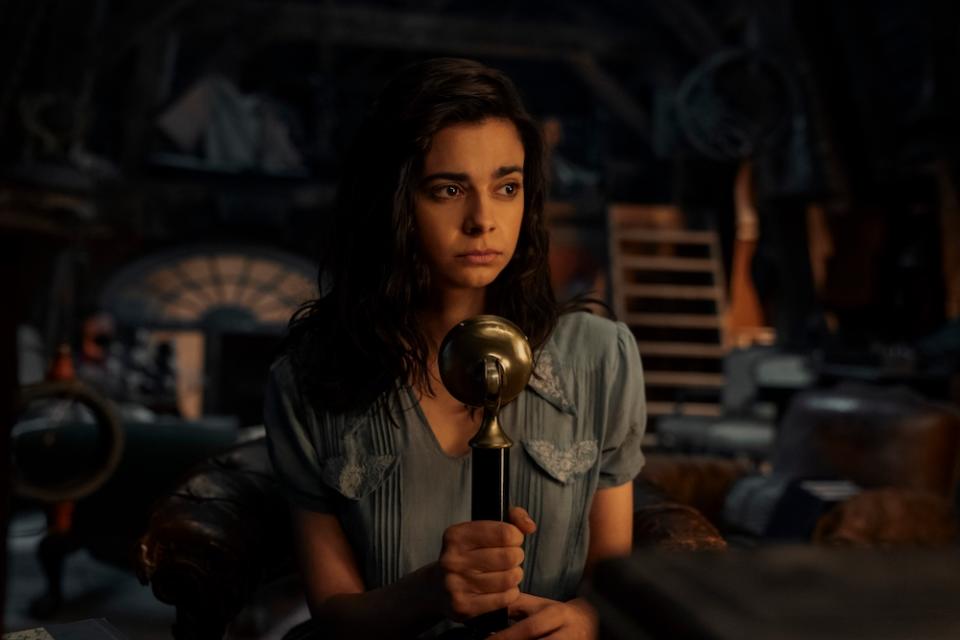
Levy chased Anthony Doerr’s Pulitzer Prize-winning novel after it came out in 2014, but Scott Rudin had already optioned the rights and was developing the New York Times bestseller into a movie. “At the time, I had a busy popcorn career — I’d just made ‘Night at the Museum: Secret of the Tomb,’ and I wanted to direct this masterpiece so badly, but the rights were gone,” says the Montreal native, who speaks fluent French and exudes serotonin.
Levy went on to produce and direct several hits, including 2016’s “Arrival” (which his company, 21 Laps, produced) and 2021’s “Free Guy” (which he directed before the pandemic), along with being an executive producer and director on Netflix’s flagship show “Stranger Things.”
Levy and his producing partner Dan Levine at 21 Laps had to launch an extended courtship to get Doerr to agree to a deal. Feeling burned after Rudin’s movie project failed and Fox decided not to renew the rights, Doerr and his agent thought perhaps the story just wasn’t right for the screen, and wouldn’t resell to Levy. But eventually, Doerr was enticed by Levy’s idea to turn the book into a limited series, which would give the story an expansive canvas.
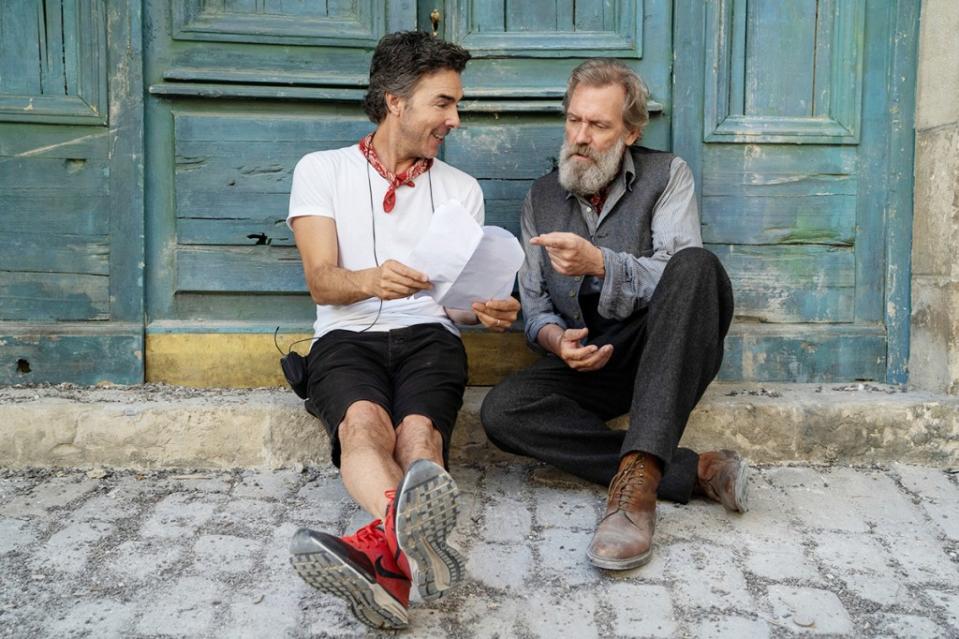
And by the time he started having those conversations with Doerr, Levy had landed a first-look pact with Netflix, which then brokered the deal. He also had enough star power and leverage to get the streamer on board with his deter- mination to, as Levy puts it, cast “unknown low vision or blind girls” to play the older and younger versions of Marie for this big-budget production. Entirely lensed on location in Budapest, Villefranche-de-Rouergue and Saint-Malo over an 80-day shoot, with A-list stars and a crew of more than 200 members, “All the Light We Cannot See” ranks in the same league as “The Queen’s Gambit.” It’s a breed of prestigious limited series that Netflix rarely does anymore, one Knight describes as “reflective of an era of television” during which streamers spent big on content.
It’s also a WW II-set drama that strikes a chord, exploring wartime morality with themes about antisemitism that are all too relevant today, while also breaking ground on the accessibility front.
Levy says his desire for authentic casting formed “way before” he saw 2021 best picture winner “CODA,” for which deaf actor Troy Kotsur also won an Oscar. “I was shaking so much that the whole couch moved,” Levy says of his first viewing of the film. “It was another confirmation that I had to do it that way.” He adds that “Netflix supported my vision,” and gave him enough money to make the show as he had imagined it. Levy not only directed all four episodes, but also created it with Knight and executive produced it with Levine through 21 Laps.
When I visited Levy on set in Saint-Malo, he described the endeavor as an “absolute beginning — a turning point in my career.” Indeed, he was on the verge of a new chapter. Shortly after we spoke, news broke that he would be directing “Deadpool 3,” starring Ryan Reynolds and Hugh Jackman, and later it emerged that he also was on track to direct a mystery “Star Wars” project.
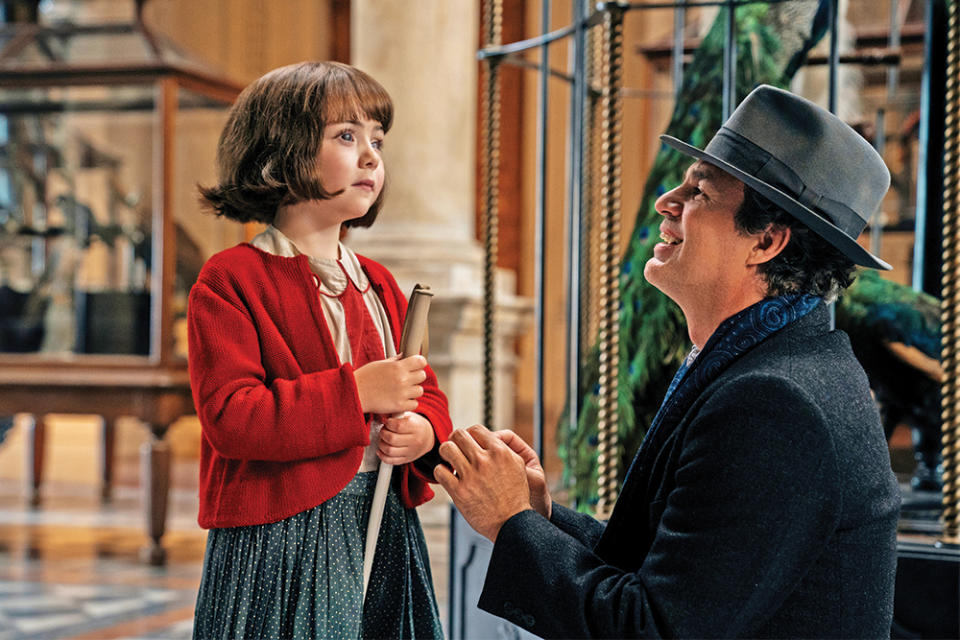
Levy shed tears as he recalled his first Zoom encounter with Nell Sutton, then age 7, the witty blind girl who plays the younger Marie: She was the first person to be cast for the series. Much later came Loberti, whom he describes as a “miracle.” Although she had no acting experience, she beat out more than 1,000 submissions across the U.S., the U.K., Australia and New Zealand to land the part. The casting was conducted entirely via Zoom during the lockdown period of the pandemic.
In an interview on the set, Loberti still seemed in awe about fulfilling a lifelong dream, after being told at a young age that she couldn’t become a professional actor due to her disability. “I never thought an opportunity like this would be available to me, to play a romantic heroine like Marie — someone who is so independent and strong, a full-blown character,” Loberti said, adding that she “had always desperately wanted to do acting but I didn’t pursue it.”
Executive producer Levine, Levy’s close collaborator, was also in Saint-Malo, and recalled that Loberti floored everyone during her audition: “She had this slight British accent, and she was wearing one of her grandmother’s sweaters. So she looked very period, and she was so poised.”
In the series, the graceful Rhode Island native not only pulls off a proper British accent, but also plays Marie as both a teen and a young adult. When we spoke, Loberti, still in costume, made herself instantly available, and seemed able to come in and out of character like a pro. As we sat next to each other by the beach, I was struck by the fieriness that emanated from her dark brown eyes.
Speaking in a quiet, confident voice, Loberti said a childhood teacher had reached out to tell her that Netflix was in the process of casting for the project. She was a fan of Doerr’s book, which she had read several times, and also highly familiar with Levy’s work. “I grew up watching ‘Night at the Museum’ — his films help define pop culture,” Loberti said. “‘Stranger Things’ is the only thing that my mom and dad and I watched together, virtually, while I was in college.”
Her hope for the limited series, one of the first television projects to authen- tically portray blindness, is that it will “empower blind people to tell their stories on a bigger scale,” and will continue what “CODA” started for disability representation by “getting people outside of the community to watch.” She also wants Marie to inspire others to “believe that they can do anything they put their minds to.”
For Levy’s part, he credits the Duffer brothers, the creators of “Stranger Things,” for teaching him to stand up for himself creatively, and “hold firm, even if it creates uncomfortable moments.” He adds, “When I was a younger director, I was very quick to compromise for the sake of harmony.”
Casting Loberti and Sutton as the lead character sets a “precedent regarding representation and authenticity,” Levy says. But ultimately, he took that route because it would be “the better decision for the quality of the show.”
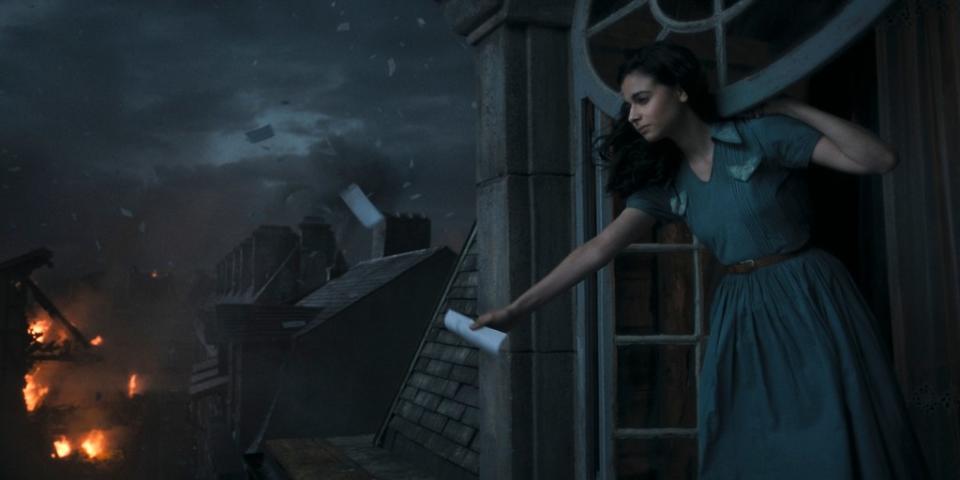
More than a year later, with the project now complete, Levy remains thrilled that he’d cast Loberti, saying, “The few people who have watched the show find it hard to believe that Aria had never acted professionally.” He also cites Lober- ti’s contributions to her character: “Every day, she would point something out to me or Mark or Hugh about her experience as a blind young woman.”
“Sometimes the script might say something like ‘Daniel takes his daughter’s hand and leads her to the couch,” Levy continues. “But Aria would immediately say, ‘Well, how long have I lived in this home? If I’m familiar with this environ- ment, I don’t need someone to lead me because I’ve memorized the space,’ and little things like that that we wouldn’t know.”
Shooting in Saint-Malo, in addition to Villefranche-de-Rouergue and Budapest, “wasn’t the cheap choice, but I knew it was the right choice,” says Levy, because it was the actual setting in the book. “When you shoot in the real place where the real history happened, you get an authenticity that you can’t replicate on a soundstage or with any visual effects.” That rationale extends to his refusal to shoot “Deadpool 3” on a green screen, choosing instead to film it on location in the U.K.
Levy’s perfectionism was on display that day on set, when he had Ruffalo and Loberti redo a stroll on the beach dozens of times to capture that “moment of perfect intersection” between sun, clouds and tide. “We had hours and hours of meetings about sun paths and tide charts,” Levy told me.
While the atmosphere on the set was studious, there wasn’t a hint of tension. In fact, Ruffalo and Levy, who are old friends, hopped up during a short break to record a video saying hi to my son upon hearing that he was a fan of the Hulk.
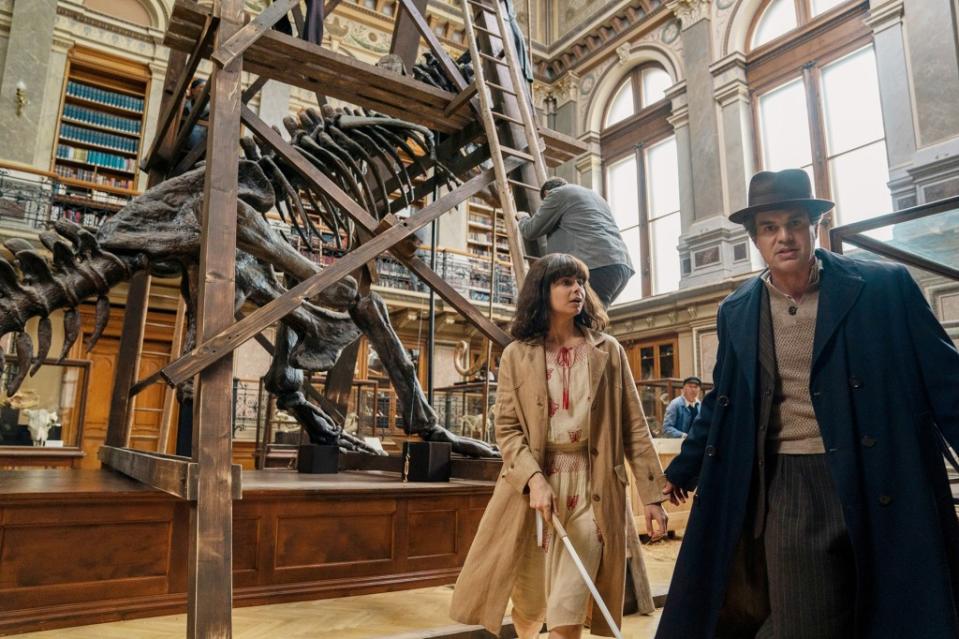
“I’m a wreck, and he’s a rock,” said Ruffalo of his dynamic with Levy, smiling ear to ear, as the director burst into laughter. He added that Levy, with whom he’s made two movies, “has helped me a lot through this,” specifically with how his character Daniel LeBlanc speaks. “It’s been a little difficult with the dialect and the language,” said Ruffalo, who this year also has an English accent in Yorgos Lanthimos’ Golden Lion-winning “Poor Things.”
Although his character in “All the Light We Cannot See” is French, Ruffalo joked that he can only say, “Où est la bibliothèque? Où est la gare?” (Where is the library? Where is the train station?), two sentences that he may have memorized from a travel guide.
Levy thought of Ruffalo for the role of the paternal Daniel because, after casting him in “The Adam Project,” he knew that “Mark brings so much organic warmth and love and soul.” While the series revolves around the relationship between Werner and Marie, Levy, who has four daughters, “knew that my adaptation would be also very much a father-daughter story, so the casting of the father was everything for me — and Mark’s a great father.”
“I don’t know how to do my job in an unemotional way,” he continues. “This story really tapped into deep feelings.” Through the years, Levy has surrounded himself with a close-knit group of actors, like Ruffalo, Reynolds and Adam Driver, whom he directed in “This Is Where I Leave You.” Asked whether Driver could turn up in his “Star Wars” movie, he laughs and says coyly, “As you know, Adam is a buddy, and I’ve always been a huge fan of Kylo Ren.”
In a recent interview, Knight says he was lured by “All the Light We Cannot See” because he’s “fascinated by World War II.” Adapting Doerr’s 544-page book was a challenge, but he proceeded as he often does, by “reading it a few times to get a sense of who the characters are, and then going with them through the journey that they go through in the book.”
Although it’s a period piece, Knight says the story’s timelessness lies in the fact that Marie and Werner represent “two people who are the same — but stand on opposite sides of the biggest ideological physical battle of many centuries, not just the 20th century.”
Levy, who is Jewish, believes the themes of the story continue to resonate because it’s about “the resilience of goodness and hope in the face of evil and darkness.” “There’s so much in our world of 2023 that is dark, sometimes in our politics, in our culture and in the resurgence of hateful points of view or movements,” he says.
Over the weekend, we spoke again about the latest developments in Israel and around the world after the Hamas massacre. “This wave of global antisemitism is making me realize that even though our show was set in the ’30s and ’40s, that the hatred against the Jewish people never went away,” Levy says. “I’m speechless and I’m heartbroken.”
Levy draws inspiration from Marie and Werner, who brave Nazi orders and risk their lives to save each other, as he says with conviction, “We must be resilient in our humanity, in our kindness and in our optimism, in the face of those darker forces that are tragically as present in 2023 as they were in 1943.”
“All the Light We Cannot See” premieres on Netflix on Nov. 2.
Best of Variety
Sign up for Variety’s Newsletter. For the latest news, follow us on Facebook, Twitter, and Instagram.

